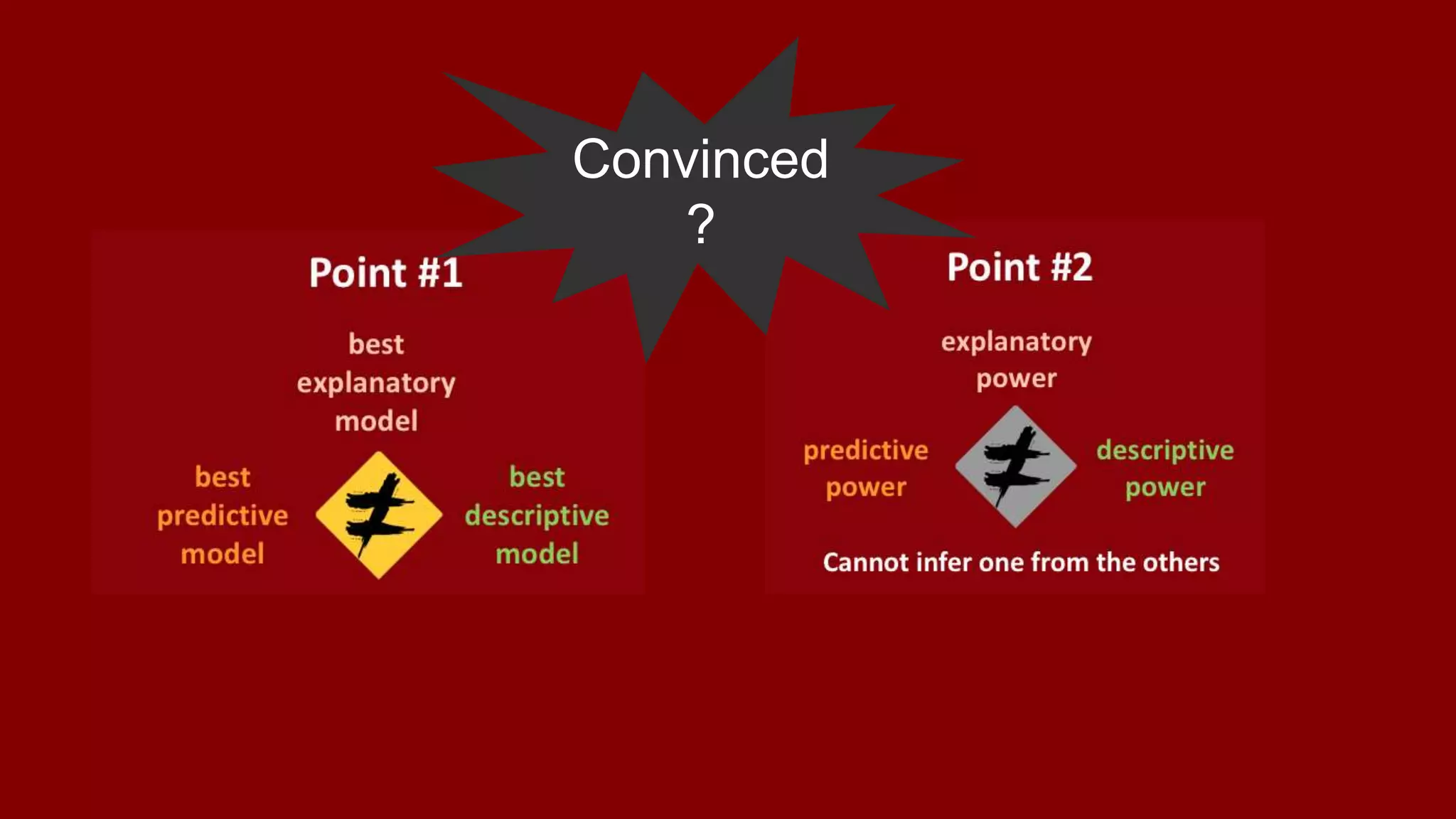The document discusses the distinctions between explanatory, predictive, and descriptive statistical modeling, emphasizing their different purposes and methodologies. It addresses misconceptions in academia and industry about the interchangeability of these modeling types and highlights the importance of understanding their unique roles in research and practice. Additionally, it touches on the impact of predictive analytics in scientific research, suggesting that predictive power from explanatory models can provide value beyond mere utility.


























![Predict ≠ Explain
+ ?
“we tried to benefit from an
extensive set of attributes
describing each of the movies in
the dataset. Those attributes
certainly carry a significant signal
and can explain some of the user
behavior. However… they could
not help at all for improving the
[predictive] accuracy.”
Bell et al., 2008](https://image.slidesharecdn.com/explainpredicttesthailandjan2018-180110152601/75/Statistical-Modeling-in-3D-Explaining-Predicting-Describing-27-2048.jpg)
![Predict ≠ Describe
Election Polls
“There is a subtle, but important, difference between
reflecting current public sentiment and predicting the
results of an election. Surveys have focused largely on
the former… [as opposed to] survey based prediction
models [that are] focused entirely on analysis and
projection”
Kenett, Pfefferman & Steinberg (2017) “Election Polls – A Survey, A Critique,
and Proposals”, Annual Rev of Stat & its Applications](https://image.slidesharecdn.com/explainpredicttesthailandjan2018-180110152601/75/Statistical-Modeling-in-3D-Explaining-Predicting-Describing-28-2048.jpg)


















